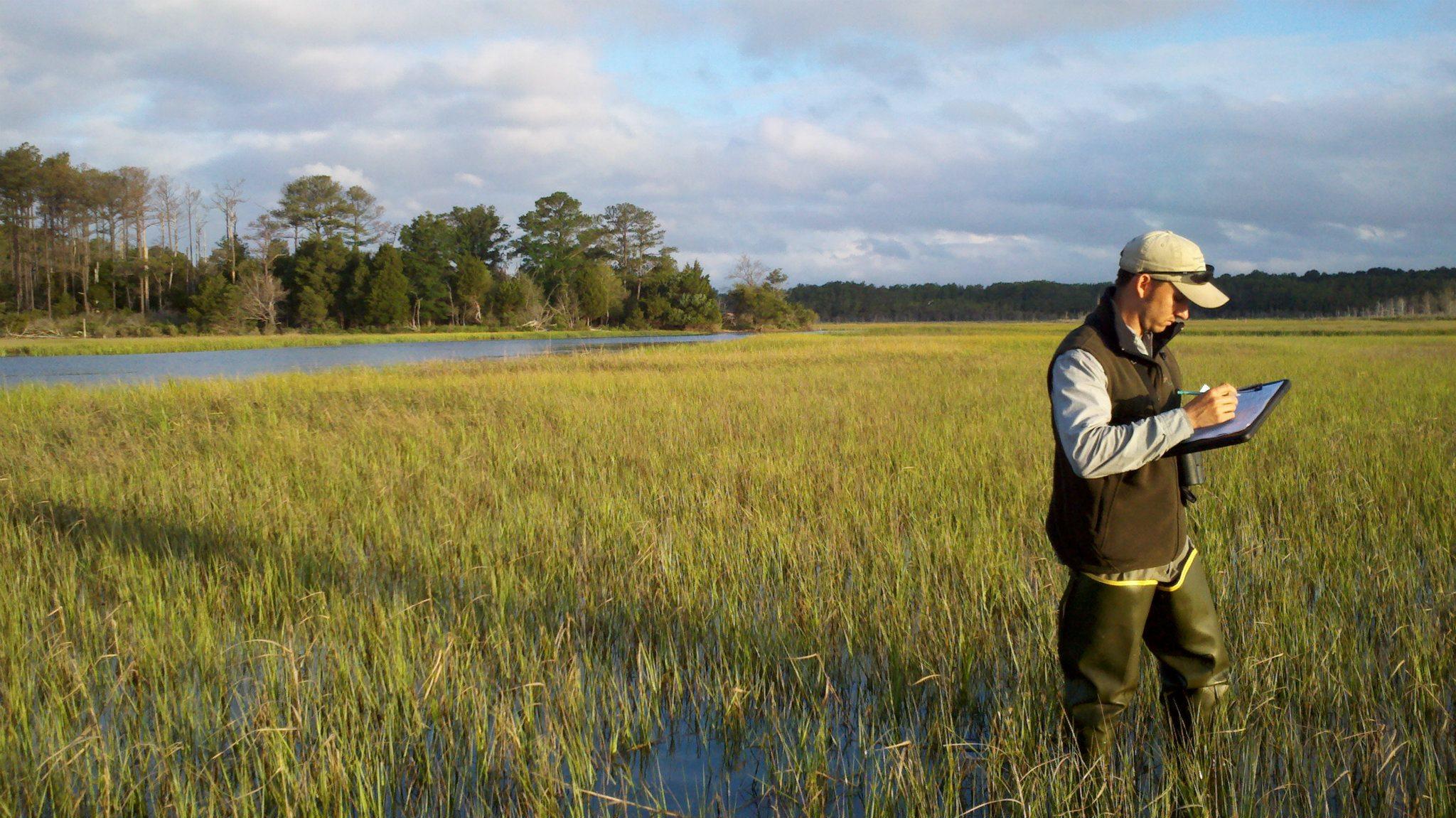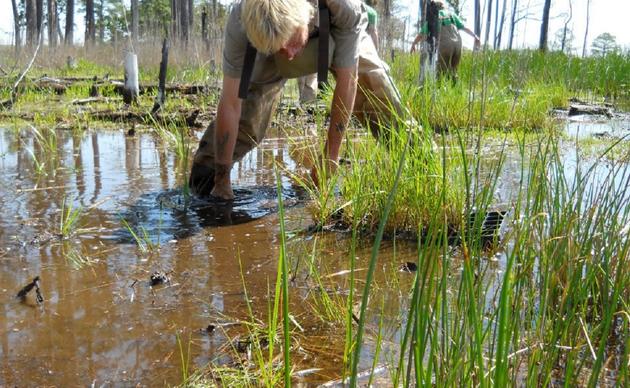Saving Maryland’s Salt Marshes
It’s hard to find a place in Maryland that feels like a true wilderness. Yet just two hours away from Baltimore and Washington DC, the tidal marshes of the Chesapeake Bay are just that. The tides own these marshes and great expanses of Spartina marsh grasses and needlerush stretch as far as the eye can see. Salt marshes are special places to birds and other wildlife, but sea level rise has elevated the waters in the Chesapeake Bay by one foot during the 20th century and is accelerating due to climate change. Science-based models forecast a further increase of three feet in water levels by the end of this century. This rise would be enough to drown all of the Bay’s tidal marshes (more than 200,000 acres) and release millions of tons of sediment into the open waters of the Bay. This is why Audubon is working hard to make our salt marshes more resilient to sea level rise.
Why are salt marshes important?
- Salt marsh is a globally rare habitat (only 45,000 km2 worldwide), much of which is threatened by climate change-induced sea level rise.
- Most tidal marshes are salt or brackish. A unique assemblage of birds inhabits salt and brackish marshes. Some species evolved in this harsh environment and live nowhere else. Cheasapeake Bay’s salt marshes host globally significant populations of 2 such species, Saltmarsh Sparrow and Black Rail.
- Salt marshes provide valuable “ecosystem services”, including nurseries for the Chesapeake Bay’s commercially important fish, a buffer protecting coastal communities against storm surge, a filter that stops nutrient and sediment pollution from entering the Bay, and a recreational resource attracting visitors who contribute millions of dollars to local economies.
How you can help, right now
Donate to Audubon
Help secure the future for birds at risk from climate change, habitat loss and other threats. Your support will power our science, education, advocacy and on-the-ground conservation efforts.
Become a Monthly Donor
Donating monthly is flexible, easy and convenient and makes you a champion birds can count on, no matter the season
Birds Need You!
Get involved in helping to preserve our birds and their habitats today. There is something for everyone!






